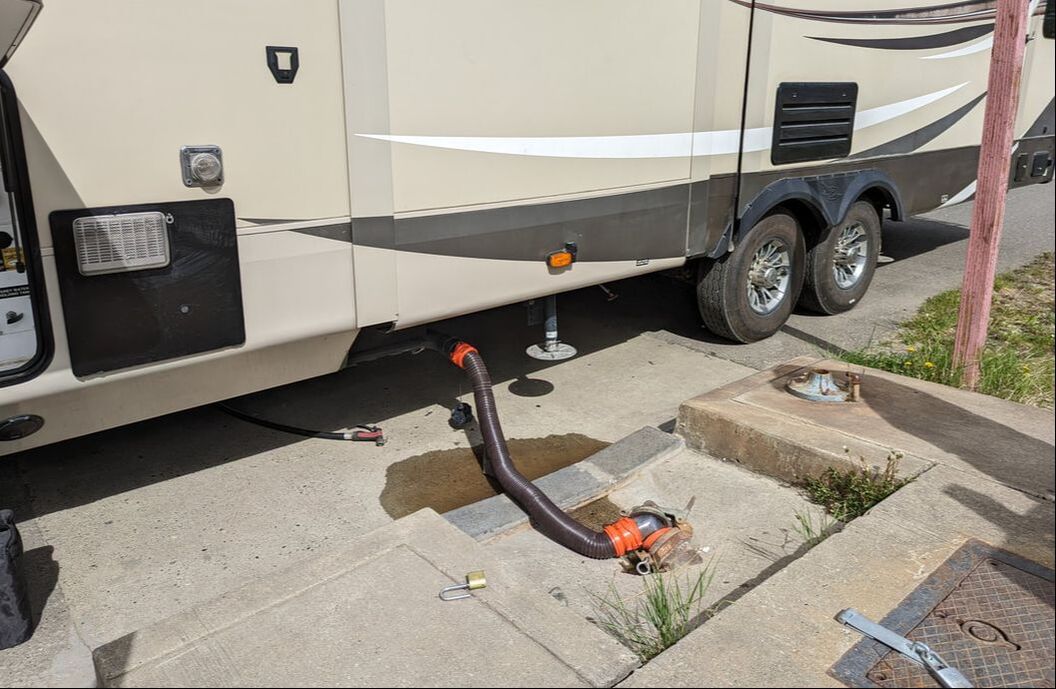|
From the vantage point of a couch in front of a TV, full-time RV living can look pretty alluring: driving open roads, camping next to rivers and lakes, going where you want when you want, living a life of luxury. Much goes on behind the scenes to make all that happen, though. Because we relocate our fifth wheel every week or two, we always have plans in motion and on our minds. We don’t like to book RV stops far in advance so that we have freedom to change our route or destination on a whim. But we do like to have an idea of the direction we’re heading. For that reason, we’re continually working on future stays — not an easy feat for two middle children who aren’t great at making decisions. This involves a number of factors. Researching Destination Areas Adequate preparation requires a lot of research. We use our Campendium app to find big-rig-friendly boondocking options, campgrounds, and fees. If we don’t find something we like in a certain location, we increase the search radius to an hour or so outside of that destination area. We also check our Harvest Hosts app to identify if any big-rig-friendly hosts are in that vicinity. We pay an annual fee to be part of Boondockers Welcome, which was acquired by Harvest Hosts. This offers us free stays of up to five nights, depending on the host’s preference. Some hosts offer electric hookups, for a fee. This can come in handy when the weather’s warm and we want to run our air conditioners. Additionally, we use Google Maps to look at the satellite view of any place we’re considering for a better picture of the feasibility of getting our rig into and out of it. And Google Earth allows us to measure distance to determine if our rig will truly fit. Planning Routes Once we’ve identified a place we’d like to stay, we have to figure out the best way to get there. Google Maps may seem like the natural go-to, but it doesn’t take into account the height or length of our rig. Although the app’s suggested routes tend to be OK for us in the West, we can’t rely on them in the East, where low clearance and weight restrictions can be issues. We use our CoPilot navigation app to steer us in the right direction. Originally a trucker app, CoPilot allows us to enter the dimensions of our rig and then navigates us accordingly, avoiding U-turns and roads with weight and height restrictions. Identifying Fuel Stops Finding our weekly destinations and routes is only part of the necessary research of RV life. We also have to locate places along the way where we can get fuel. Since upgrading the capacity of our fuel tank, we can go farther before needing to stop, which gives us more options to find the best diesel price using our Open Roads app. Open Roads is a fleet fuel program that gets us discounts at TA, Petro, and Love’s truck stops across the country. After checking Gulliver’s fuel level to determine how far we can go before we need more diesel, we look at Google Maps to identify cities with truck stops. Equipped with that information, we go back to our Open Roads app and enter the city name to populate fuel stations there, along with their prices. The app shows us the cost of fuel with our discount applied, not the publicly displayed price. Finding Dump Stations If we’re doing any sort of boondocking or moochdocking, we also need to identify RV dump stations nearby where we can empty our waste water tanks. Campendium can help with that, as can a website called rvdumpsites.net. Finding dump stations is only half the battle. More importantly, we have to determine if our rig can get into and out of the facility. We’ve encountered plenty that weren’t compatible with the size of our 42-foot-long rig — even in established campgrounds.
To figure out if we’ll be able to get Tagalong in and out of a dump station, we once again consult the Google Maps satellite view and street view, if available, for accessibility and clearance issues. Checking the Weather Another big part of RV logistics is keeping tabs on the weather, as we don’t like to drive in rain or other inclement conditions. Working our way north for our Alaska adventure, for example, we had to wait for the weather to warm up before we could move on. This left us in the desert outside of Las Vegas for two weeks, and we still got snowed on in Twin Falls, Idaho. As you can imagine, all of this research takes considerable time. It’s a not-so-pleasant aspect of full-time RV living, which is not for the faint of heart. Yet, it’s a necessary part. Thankfully, Bob is an excellent researcher and does most of this planning for us. You might also like Confessions of a Full-Time RVer.
0 Comments
Leave a Reply. |
AuthorThis is the travel blog of full-time RVers Bob and Lana Gates and our truck, Gulliver, and fifth wheel, Tagalong. Categories
All
Archives
July 2024
|




 RSS Feed
RSS Feed